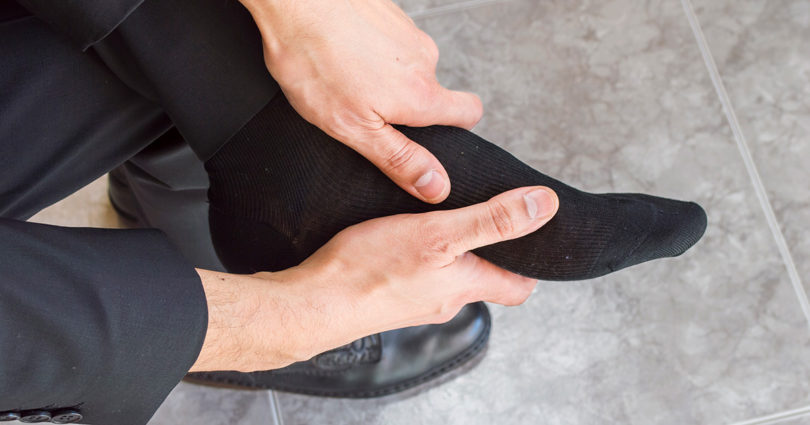If you have a foot blister that’s blue and red under the skin, and isn’t healing, it may be a sign of a diabetes-related foot problem.
Who is at higher risk?
“Individuals with diabetes, and unfortunately more often, older individuals who are newly diagnosed with Type 2 have a higher risk of foot problems that can result in serious complications,” says Nicholas Durand, D.Pod.M., foot specialist, at Sunnybrook’s Centre for Independent Living (SCIL).
‘Tingling’ in the foot
Neuropathy or damage to the nerves causes numbness or reduced nerve stimulation to the muscles often in the lower extremities. Add to this, vascular issues or reduced circulation within large blood vessels, or smaller, perfusion vessels that carry blood to the skin. This slows healing and can contribute to lower immunity.
“Some patients describe the numbness, as a tingling or electric shock sensation, or a feeling that their socks are constantly bunched up under their toes,” says Durand, who collaborates with pedorthists and prosthetists at SCIL, and with diabetes care areas of the hospital including SUNDEC (Sunnybrook Diabetes Education Centre), Endocrinology, Vascular, Infectious Diseases, and Dialysis.
Individuals with Type 2 diabetes are also more prone to foot issues, because they may have other medical conditions, and unlike patients with Type 1 diabetes diagnosed at an earlier age, they have less experience monitoring the condition.
Prevention is crucial
“Preventive steps are crucial,” says Kevin Fraser, certified pedorthist, SCIL. “We educate patients about the risk factors and about the importance of frequent and thorough inspection of their feet – what to look for when examining their feet.”
“Areas of concern might be a developing callous, or an area where the skin has hardened or become red because of pressure or rubbing from their shoes or seams in their socks,” Due to reduced circulation and lost sensation, a simple blister can quickly worsen, and give rise to serious infection,” says Kevin. “We work with patients to address and help reduce pressure points on their feet by creating custom-made foot orthotics or fitting orthopedic footwear.”
“Life is busy,” adds Durand. “Sometimes it feels like it gets in the way and you may inadvertently step on glass or injure your foot in some way and not feel it. As an individual with diabetes, it is best to be aware, and be informed. Seek help and advice when you need it. Keep moving as much as possible, maintain a healthy diet, and strive to be at a moderate weight.”








